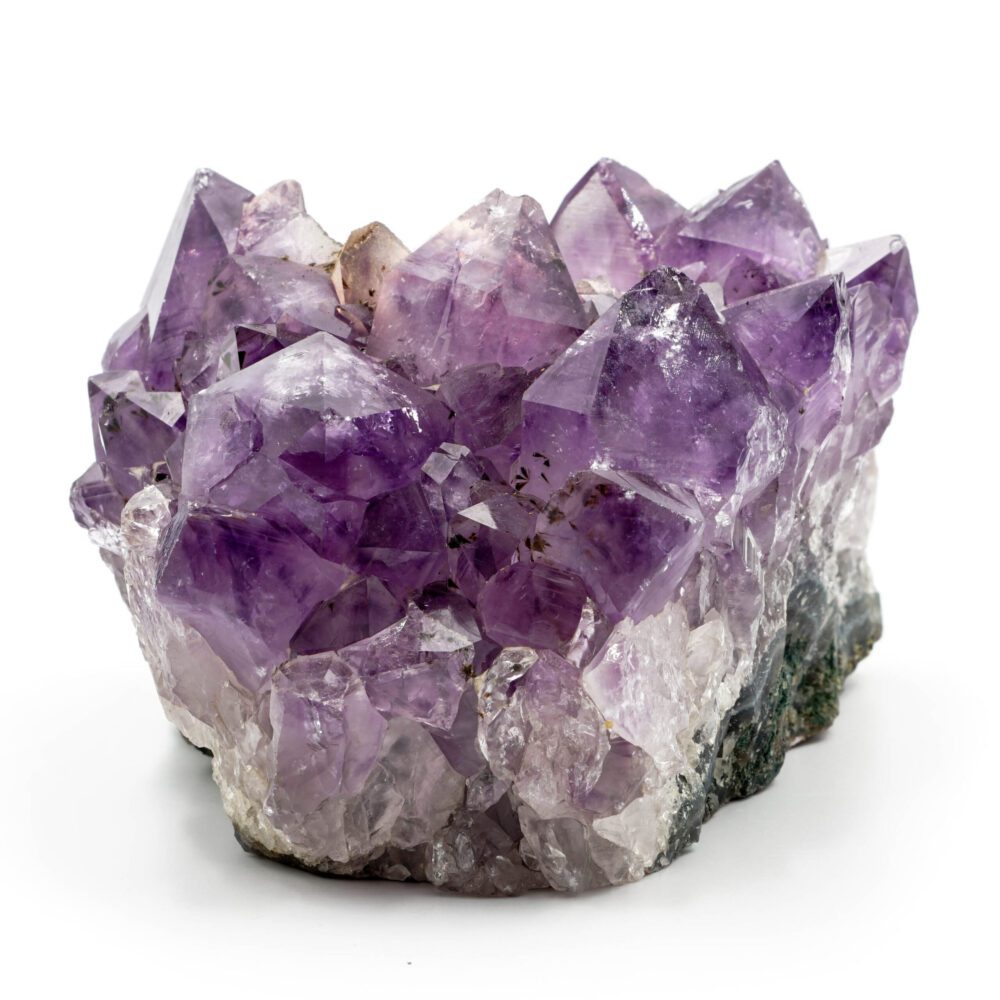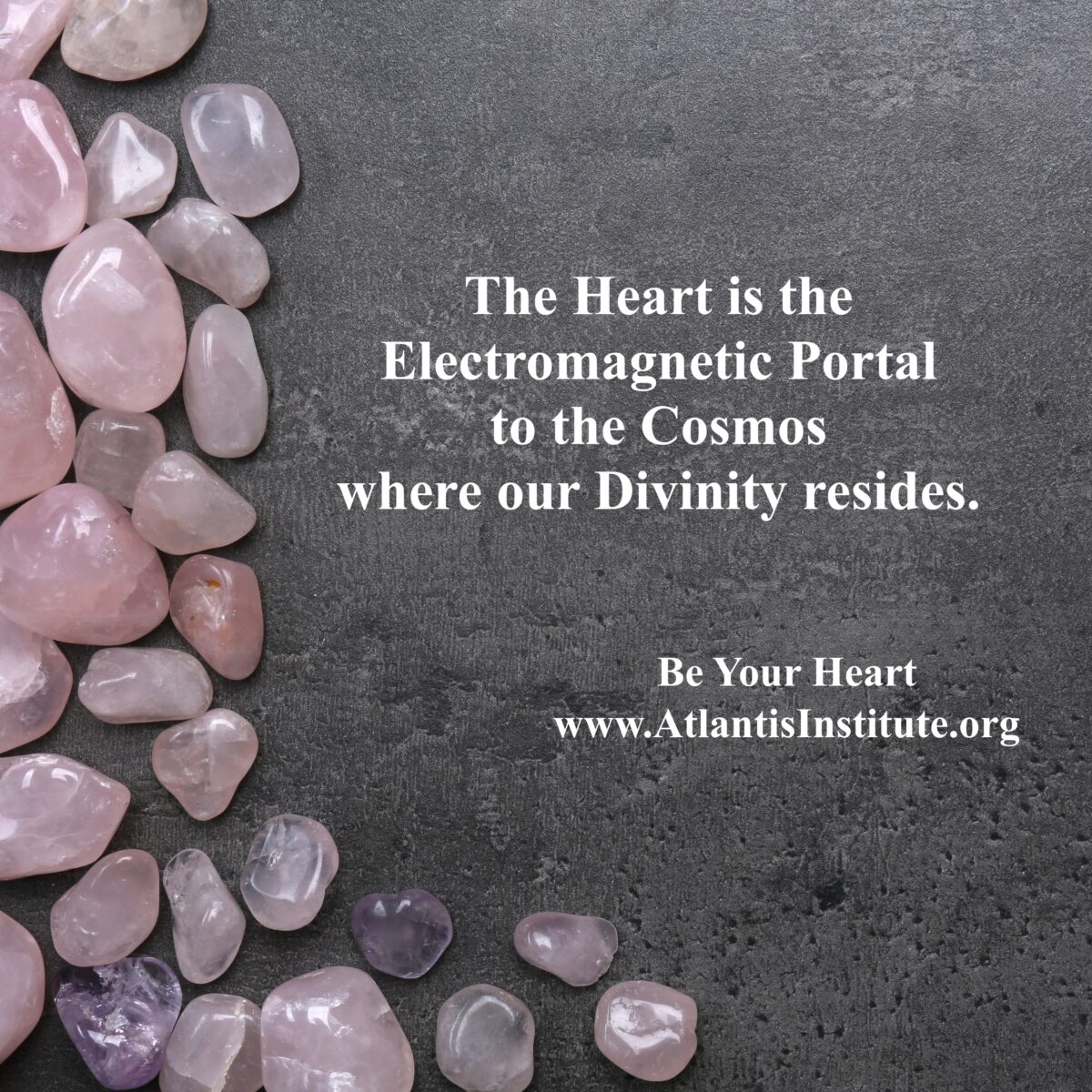AMETHYST – Atlantis Institute Crystal Encyclopedia
Origin
Amethyst is a primary crystal formation created when the molten magma from volcanic explosions colls and forms into igneous rock.
This usually happens in cavities in volcanoes where the combination of chemistry and structural arrangements of mineral deposits, atoms and substances pass from gas or liquid into a solid-state or by means of going out of solution by precipitation or evaporation.
Amethyst is a silicate mineral of quartz and is the purple variety of the Quartz family. This purple hue results from trace particles of iron forming within the silica acid in contrast to quartz's transparent colour created when the iron is not present.
All crystals belong to a different group according to the basis of the relationships of their axes. There are seven systems and 32 classes of symmetry. Amethyst crystals belong to the Trigonal system.
History
Amethyst has a long and detailed historical, traditional past that dates back to early civilisation and before. It was revered as one of the five cardinal gemstones to be of standing with the Emerald, Ruby, Diamond and Saphire for many Centuries until the discovery of large Amethyst mines in the 18th Century that moved its status from ‘precious’ to ‘semi-precious’.
Amethyst is mentioned in the Bible and the Torah, and the stone was connected to the Catholic Church as it was widely associated with the blood of Christ.
The ancient myth of Bacchus from the 14th Century tells the story of how Bacchus, the God of Wine, in foul humour, decided to reap his frustrations on the first person he met. That person was the beautiful Amethyst, who was on her way to worship at the shrine of the Goddess Artemis. Bacchus set ferocious tigers on Amethyst, who cried out in fear for Artemis, who responded by turning her to white stone as protection. Taken by remorse, Bacchus took his best wines and poured them over her, thus turning the white stone into the purple hue that gives the Amethyst its distinctive colour.
Amethyst stone is highly desirable and is commonly used worldwide. Natural Amethyst is only enhanced through the tumbling, cutting and polishing process, whilst lab-created Amethyst is widely used in the making of jewellery.
Specification
As a natural stone, the Amethyst is enhanced through tumbling, cutting and polishing to reveal its attractive form.
Its mid purple colour is highly sought and varies in hue throughout the stone. Amethyst is common in jewellery and in semi-precious stone form and is highly popular worldwide.
Varieties
Amethyst have a few variations, namely:
- Chevron
- Green
- Bolivian
- African
- Ametrine (mixed with Citrine)
- Brandberg
Esoteric Attributes
Crystals, by their very nature, can receive and focus energy in different ways. Their molecular structure enables them to be used to amplify and convert energy. Hence, crystals have been used for centuries to aid healing and transmute energy both in the metaphysical and physical world.
Because each crystal family has different formational backgrounds, each also has different vibrational frequencies that can be harnessed and used for specific purposes. Each, therefore, has particular qualities that can be used to help a person heal on the many different levels of their being.
The following is a list of healing attributes associated with Amethyst crystals.
Mental: Amethyst crystals are said to have calming properties that provide clarity of thought to the brain. It also aids with the relief of OCD Obsessive Compulsive Disorder and hyperactivity.
Emotional: This Crsytal brings calm to angry minds and soothes anxiety. It brings clarity of thought and centres those who are overstressed or overwhelmed. It can help identify the primal cause of behavioural patterns and emotional habits and is essential in negating addiction and intoxicating drivers.
Physical: Amethyst aids the digestive tract as well as heart, stomach and skin. It reduces pain and swelling and heals bruising. The stone also has strong properties in strengthening the nervous system and endocrine glands, relieves headaches, and reduces nervous tension.
Crystal Chart - Amethyst
Crystal: Amethyst – Medium purple
Mineralogy: Silicate Quartz
Geometric form: Trigonal | Hexagonal
Formation: Primary (molten magma)
Family: Quartz
Birthstone: Ayurvedic Birthstones - Amethyst is the stone associated with February.
Astrology Birthstone (Zodiac) Associated with the astrological sign of Pisces (19th Feb to 20th March).
Appearance: Various crystal habits such as colorful, stubby, drusy and geodes. Purple in colour and can be brittle.
Aura: The high frequency of this Crystal will remove and purify the Aura of negative energy and place a protective light shield around the body. This allows for a clear-centred aura to open to spiritual connection.
Colour: There are a variety of purple hues. Chevron Amethyst includes banded white, which can also sometimes turn to a light green colour.
Chakra: Amethyst relates to the Crown Chakras and is in tune with the Third Eye.
References and resources:
Michael Gienger, Healing Crystals, Earthdancer Books, 2009
The Columbia Encyclopedia, Crystal, 6th ed. 2014
World of Earth Science, Quartz, 2003
Encyclopedia of Occultism and Parapsychology, Crystal Healing, 2001
http://gemstone-dictionary.com/birthstones-by-month.php
New Oxford American Dictionary
You can watch our Free Videos on Crystals HERE
Become a Crystal Therapist HERE
See our fantastic selection of Healing Crystals HERE
















